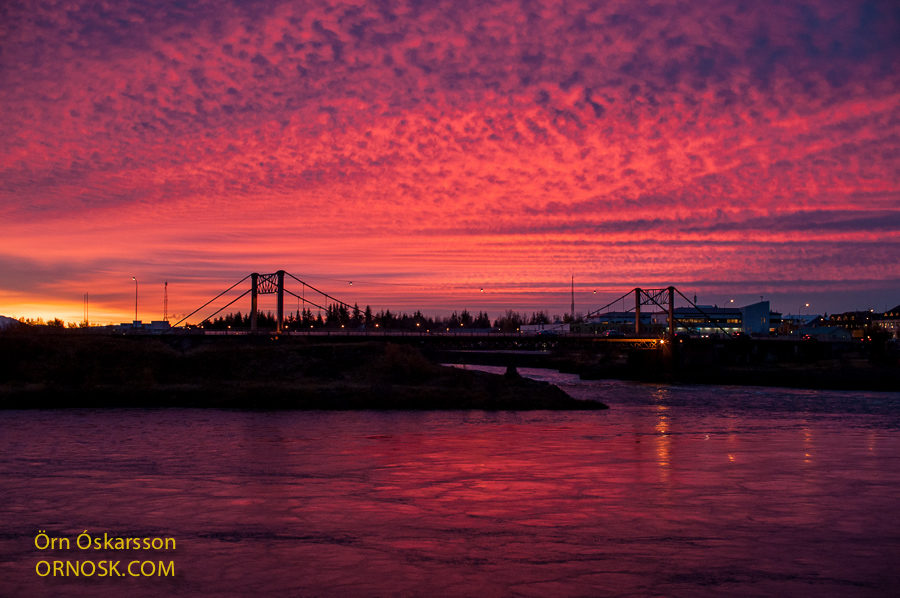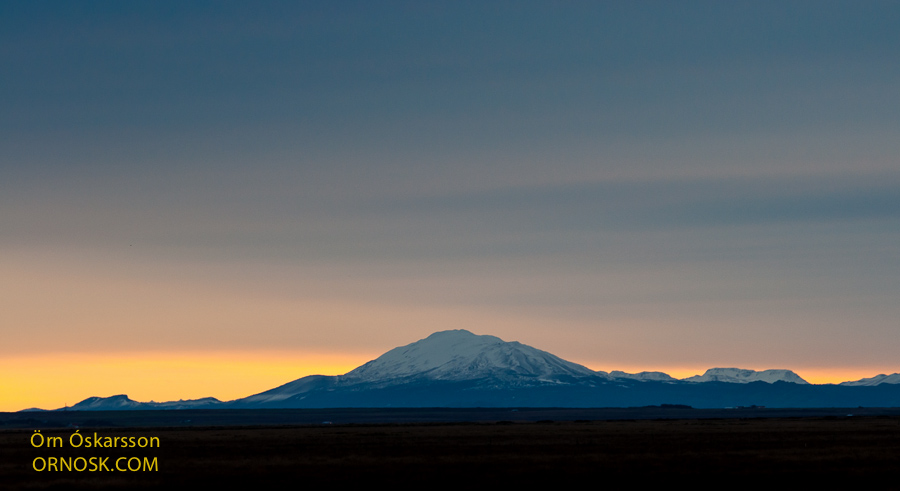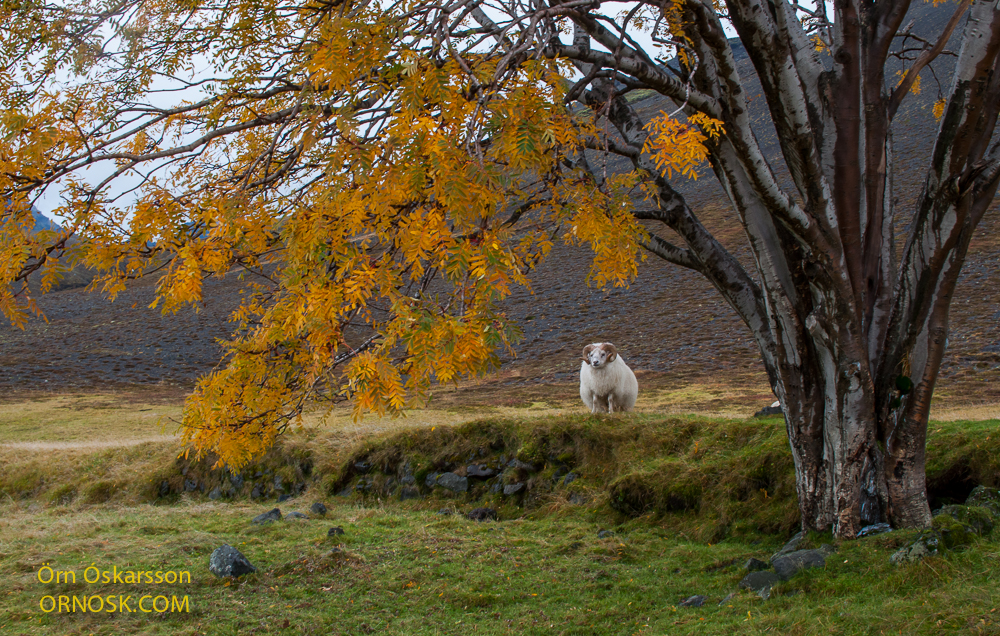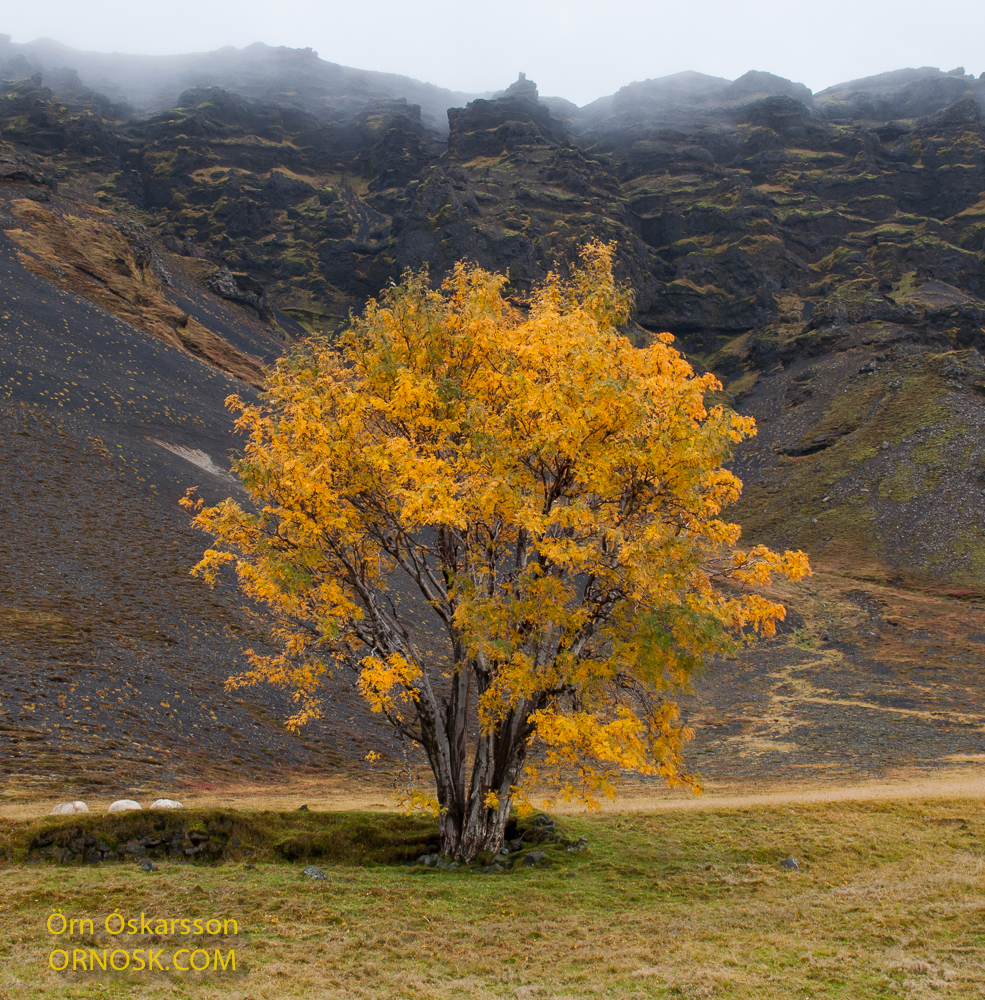
Beautiful colours lend a magical light to the early morning just before sunrise.

In recent years it has become popular to have your wedding pictures taken in the great outdoors. Couples often travel long distances to be united in marriage and Iceland is a popular destination.
Last weekend we came upon these newlyweds at Glacier Lagoon, Southeast Iceland. I secretly caught pictures of them when no one was watching – hope they don’t mind. It was windy and the temperature just +5°C. We wish them a very happy future and warmer days than this one by the Lagoon surrounded by icebergs under the biggest glacier in Europe.
More on Glacier Lagoon – Walrus, – Fireworks

Last month the Icelandic Forestry Association announced Tree of the year 2015. This special tree is a rowan (Sorbus aucuparia) that was planted in 1923 in Sandfell in Öræfi, Southeast Iceland.

It is a special tree for many reasons. The weather conditions in Öræfi are not ideal. Here you get the strongest storms in Iceland. This rowan is very prominent in the scenery, it has seven thick trunks and it stands alone below the mountain Sandfell. The lady who planted the tree got it as a present from a friend.
In the settlement of Iceland around the year 900 the area around Sandfell was claimed by a woman. She was a widow named Thorgerdur and the first woman to claim land as her own.
Again tonight the Northern Lights continued to light up the sky. I never tire of photographing them and hope that you too, enjoy seeing them here.
Several webpages give forecasts of expected Aurora activity. This is from the Icelandic Met Office:
http://en.vedur.is/weather/forecasts/aurora/
The birch (Betula pubescens) is the only tree species that grew natural forests in Iceland before the settlement. Still today it is an important species in forestry and reforestation. Every year considerable amounts of seed is collected and used to raise plants or sown straight into barren landscapes.
Here is a group of students from the upper secondary school in Selfoss collecting birch seed in Þjórsárdalur, South Iceland. There birch has grown in an area where former there were only barren sands. This birch forest is around 15 years old and has started producing seed.
Continue reading Collecting birch seed

Quite a few Wrens have been seen recently in gardens and woodlands in the South. The summer seems to have been a good one for the species. They are now coming down from their breeding grounds in the highlands to spend the summer in the lowlands. The Wren spends the whole year in Iceland. Most spend the winter by the seaside, or by rivers and creeks that do not freeze, and eat insects, spiders and crabs.
Icelandic Wrens are bigger and darker than European ones.
This Wren was photographed in Grímsnes, South Iceland,
Veiðivötn, Fishing Lakes, are a cluster lakes in the Southern Interior. The lakes are renowned for trout fishing. The area is worth visiting for its magnificent scenery and birdlife. Click to see the slideshow.
The last few nights the Northern Light’s activity over Iceland has been extraordinarily high. Night after night the sky has been glowing with colourful lights, although the greenish one is most prominent.
Northern Lights enthusiasts say this is one of the greatest activity they have yet experienced and also the longest lasting period.
The Yellow-browed Warbler (Phylloscopus inornatus) is a vagrant in Iceland and only seen here in the autumn. It is a small bird, a little larger than the Goldcrest, so it’s a long flight for such a small thing. This autumn we have probably seen the biggest arrival of this species ever recorded in Iceland. In one day last week birders in East and Southeast Iceland spotted around 55 birds.

This Yellow-browed Warbler was seen near Selfoss, South Iceland last autumn.
Most Yellow-browed Warblers breed in Eastern Russia and their winter grounds are mainly in Southeast Asia. In recent years more and more of them overwinter in Western Europe. A lot of Yellow-browed Warblers have also been seen in Britain this autumn.

The Great Northern Diver, or Common Loon, has now left its summer breeding grounds in highland lakes and moved to the ocean around the country. In the interior we came across a few of them but it’s already getting colder and snowing so the few that are there still will be moving on quite soon.